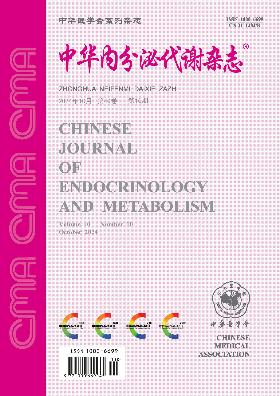Regulation and mechanism of hypothalamic inflammation on obesity
Q4 Medicine
引用次数: 1
Abstract
Many studies of the etiology and intervention for obesity have gradually focused on the brain, trying to curb the occurrence of obesity from the source. Hypothalamic inflammation has been a concern and an unresolved scientific issue in the development of obesity. Studies have shown that hypothalamic inflammation not only impairs energy balance, but also increases obesity-related insulin and leptin resistance, further promotes peripheral tissues storing up fat cells, eventually leads to the development of obesity. In addition, hypothalamic inflammation occurs before weight-gain and peripheral tissue inflammation with high-fat diets. Therefore, more and more scholars believe that hypothalamic inflammation is an important cause of dietary-induced metabolic abnormalities. The occurrence of hypothalamic inflammation is mainly accompanied by a series of complex and rapidly-activated glial, including microglia, astrocytes, and tanycyte. These cells are responsible for maintaining hypothalamic metabolic homeostasis and making up the important components of the regulatory network. Moreover, multiple teams also found that a variety of weight-loss methods(e.g. bariatric surgery, targeted drugs, fecal microbiota transplantation, and so on) can improve hypothalamic inflammation levels. Therefore, it is important to understand the mechanism of hypothalamic inflammation through different neurons, which is expected to find a more effective and safer solution to intervene and treat obesity in the future. Key words: Hypothalamic inflammation; Obesity; Glial cells下丘脑炎症对肥胖的调节及其机制
许多关于肥胖病因和干预的研究逐渐集中在大脑上,试图从源头上遏制肥胖的发生。在肥胖的发展过程中,下丘脑炎症一直是一个令人担忧且尚未解决的科学问题。研究表明,下丘脑炎症不仅损害能量平衡,还会增加与肥胖相关的胰岛素和瘦素抵抗,进一步促进外周组织储存脂肪细胞,最终导致肥胖的发展。此外,在高脂肪饮食中,下丘脑炎症发生在体重增加和外周组织炎症之前。因此,越来越多的学者认为下丘脑炎症是饮食诱导代谢异常的重要原因。下丘脑炎症的发生主要伴随一系列复杂且快速激活的神经胶质细胞,包括小胶质细胞、星形胶质细胞和tanycyte。这些细胞负责维持下丘脑代谢稳态,并构成调节网络的重要组成部分。此外,多个团队还发现,各种减肥方法(如减肥手术、靶向药物、粪便微生物群移植等)可以提高下丘脑炎症水平。因此,通过不同的神经元了解下丘脑炎症的机制很重要,有望在未来找到更有效、更安全的干预和治疗肥胖的解决方案。关键词:下丘脑炎症;肥胖;胶质细胞
本文章由计算机程序翻译,如有差异,请以英文原文为准。
求助全文
约1分钟内获得全文
求助全文
来源期刊

中华内分泌代谢杂志
Medicine-Endocrinology, Diabetes and Metabolism
CiteScore
0.60
自引率
0.00%
发文量
7243
期刊介绍:
The Chinese Journal of Endocrinology and Metabolism was founded in July 1985. It is a senior academic journal in the field of endocrinology and metabolism sponsored by the Chinese Medical Association. The journal aims to be the "Chinese broadcaster of new knowledge on endocrinology and metabolism worldwide". It reports leading scientific research results and clinical diagnosis and treatment experience in endocrinology and metabolism and related fields, as well as basic theoretical research that has a guiding role in endocrinology and metabolism clinics and is closely integrated with clinics. The journal is a core journal of Chinese science and technology (a statistical source journal of Chinese science and technology papers), and is included in Chinese and foreign statistical source journal databases such as the Chinese Science and Technology Papers and Citation Database, Chemical Abstracts, and Scopus.
 求助内容:
求助内容: 应助结果提醒方式:
应助结果提醒方式:


